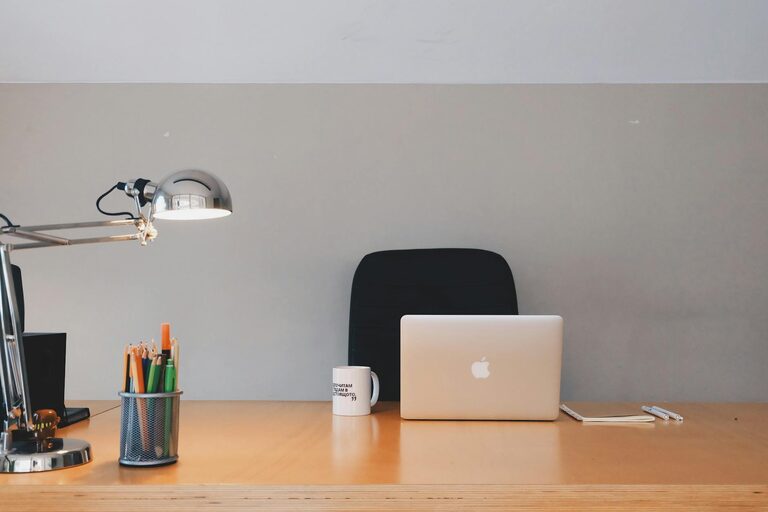Creating a workspace that promotes both focus and comfort can transform how you work and feel throughout the day. Whether you’re setting up a home office or optimizing a desk at your workplace, the right setup helps reduce distractions, improve posture, and keep your energy steady. In this post, we’ll explore practical tips and ideas to help you design a desk setup that supports your best work.
Why Focus and Comfort Matter in Your Desk Setup
The environment around you greatly influences your productivity and well-being. A cluttered or uncomfortable workspace can cause distractions, physical strain, and fatigue. On the other hand, a thoughtfully arranged desk encourages concentration, reduces stress, and can even improve your mood. When focus and comfort work together, your workspace becomes a place where ideas flow and tasks get done smoothly.
Choosing the Right Desk and Chair
Desk Height and Size
A desk that is too high or too low will strain your neck, shoulders, and wrists. Ideal desk height allows your forearms to rest parallel to the floor when typing. If your desk height isn’t adjustable, consider using a keyboard tray or adjustable chair to find a comfortable position.
Pick a desk size that fits your work style. If you use multiple monitors or need space for papers and tools, opt for a larger surface. For minimalists, a smaller, distraction-free desk may work best.
Ergonomic Chair Support
Invest in a chair that supports your lower back and encourages good posture. Features such as adjustable seat height, lumbar support, and armrests help maintain comfort during long hours. Remember to keep your feet flat on the floor or on a footrest, and avoid slouching.
Positioning Your Monitor and Equipment
Monitor Height and Distance
Position your monitor so the top of the screen is at or slightly below eye level. This reduces neck strain by allowing a natural gaze. The screen should be about an arm’s length away to prevent eye fatigue.
If you use multiple screens, place the primary monitor directly in front, and angle secondary screens to minimize head turning.
Keyboard and Mouse Placement
Place your keyboard and mouse close enough to avoid overreaching. Keep your wrists straight and aligned with your forearms to prevent strain. Using a wrist rest can provide additional comfort.
Lighting for Comfort and Alertness
Natural Light Benefits
If possible, place your desk near a window to take advantage of natural light. Natural sunlight can boost mood and alertness. Be mindful of glare on your screen, positioning the desk so light comes from the side rather than directly behind or in front.
Task Lighting
Add adjustable desk lamps to illuminate your workspace without causing shadows or eye strain. Use warm or neutral white bulbs to create a relaxing but focused environment.
Organizing Your Workspace to Reduce Distractions
Declutter Regularly
A tidy desk reduces distractions and mental clutter. Keep only essential items on your desk to maintain focus. Use storage solutions like trays, drawers, or shelves to organize papers, stationery, and gadgets.
Cable Management
Tidy cables eliminate visual chaos and make your workspace safer. Use cable clips, sleeves, or ties to bundle cords neatly behind or under your desk.
Comfort Boosters and Personal Touches
Add Plants
Bringing greenery to your desk can improve air quality and lower stress levels. Choose low-maintenance plants that thrive indoors, like succulents or snake plants.
Use Comfortable Accessories
Consider items like ergonomic keyboard wrist rests, cushioned chair pads, or footrests for additional comfort. Customizing your setup with items that feel good to you helps maintain a positive connection with your workspace.
Personalize Your Space
Include a few personal items such as photos, artwork, or meaningful objects. These touches make your workspace inviting and motivating without overwhelming it.
Take Breaks and Move Regularly
Even the best desk setup can’t replace the benefits of movement. Incorporate short breaks into your routine to stretch and walk around. This helps prevent stiffness and refreshes your focus.
Using sit-stand desks or adjustable workstations allows you to alternate between sitting and standing positions, promoting better circulation and posture.
Final Thoughts
Optimizing your desk setup for focus and comfort is a worthy investment in your productivity and health. Small changes like adjusting your monitor height, organizing cables, or adding a desk lamp can make a big difference. Remember, the best workspace reflects your needs and preferences, so experiment with these tips to find what works best for you.
Taking time to create a comfortable, distraction-free environment sets the stage for focused, enjoyable work every day. Start today by assessing your current setup and making one improvement — your body and mind will thank you.

